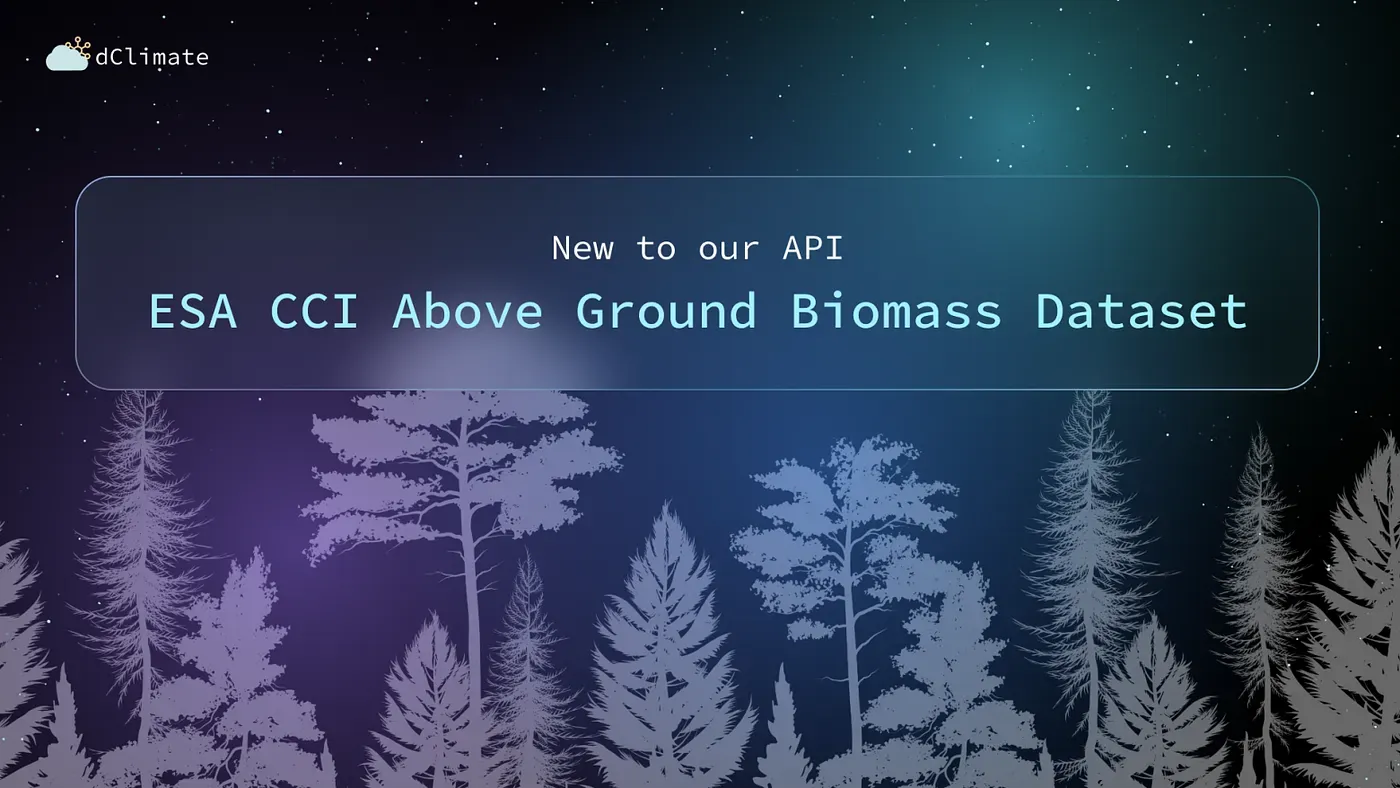New To Our API: Above Ground Biomass Data

dClimate recently added ESA CCI Above Ground Biomass Data to our API.
As our team makes new data available through our API and larger data infrastructure, we will send out updates to the community and write ups to explain the significance and applications for the data being added. The dClimate REST API is a free resource available to data consumers, with dozens of terabytes of global climate data currently available spanning over 120K+ weather stations and 50 million+ grid points. New data is being added every week, with important climate variables like carbon, temperature, rainfall, and much more currently available.
ESA CCI Above Ground Biomass Dataset — Theoretical Basis and Product User Guide Intro
Above Ground Biomass, or AGB (expressed in Mg Ha-1 of oven-dry weight of stems, bark, branches, twigs of all living trees excluding stump and roots) is part of the GCOS list of 50 Essential Climate Variables. With a direct influence on atmospheric greenhouse concentrations, surface energy budget and land water balance cycles, AGB quantification at 500 m to 1 Km resolution plays a pivotal role in the carbon and climate modeling communities, with the UNFCCC and UN REDD+ community requirements exceeding a resolution of 1 Hectare.
Unlike previous optical datasets like those from MODIS, the ESA CCI dataset (produced across three epochs: 2010, 2017, 2018) is derived using the microwave part of the spectrum, and produces spatially explicit estimates of AGB with their Standard Deviations as separate map products (also in Mg Ha-1). Sensor fusion of Sentinel 1A, Sentinel 1B, ALOS-1 PALSAR-1, ALOS-2 PALSAR-2, ENVISAT ASAR (as predictors) and ICESat GLAS, ICESat-2, GEDI (as calibrators), produces global AGB maps with higher forest structure information content due to weaker attenuation by forest canopy and deeper penetration into it. This combination produces maps with improved estimation accuracy, through allowing a larger proportion of estimated AGB to be explained by waveform-based measurements calibrated with spaceborne LiDAR.
The wide variety of remote sensing data sources available across the three epochs does however create inherent biases, to counter which, a pixel-level quality flag layer has been provided and its use is strongly encouraged by the authors of the dataset. Applications requiring change estimation can simply take the pixel value difference between AGB maps for two years of interest.
This current version 3 of the dataset being made accessible to users via the dClimate API is the result of two previous iterations. Year 1 applied separate inversion algorithms, known as BIOMASAR (with the same theoretical basis) to the L-band and C-band SAR data, to convert forest backscatter to canopy height and canopy density. Year 2 witnessed the replacement of BIOMASAR implementation with direct estimation of AGB, made possible by a better description of forest structure through the introduction of two new allometries in the retrieval model. These allometries related canopy density to height (based on ICESat GLAS measurements), and canopy height to AGB (based on ICESat GLAS height metrics and GlobBiomass AGB). Parameters unknown apriori, that describe canopy, ground and forest backscatter components, are estimated using auxiliary datasets defining canopy density, microwave transmissivity, maximum biomass, etc.
In order to produce AGB maps in Year 3, individual L-band and C-band SAR backscatter maps are merged at a common spatial resolution of 100m (L-band resampled from 150m to 100m prior to merge). The merge uses a weighting to reduce systematic errors, which favors L-band AGB estimates in mature and dense forests due to the lower backscatter sensitivity of C-band. The AGB estimates of younger, regrowing forests are, however, an average of the individual L-band and C-band AGB estimates.
The dClimate REST API is available for free today here. If you have any technical questions for our team about how to use the API, data availability, or how to add your data to dClimate, please reach out to us directly on Discord.

